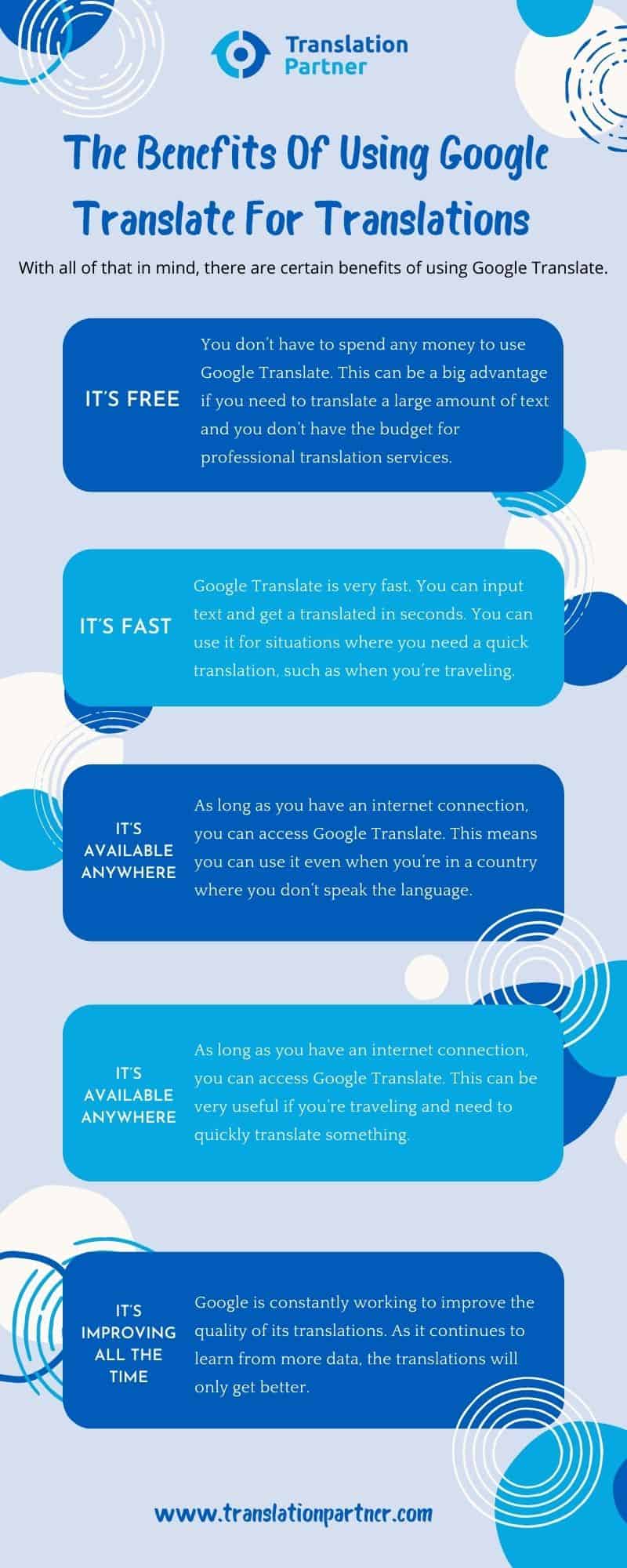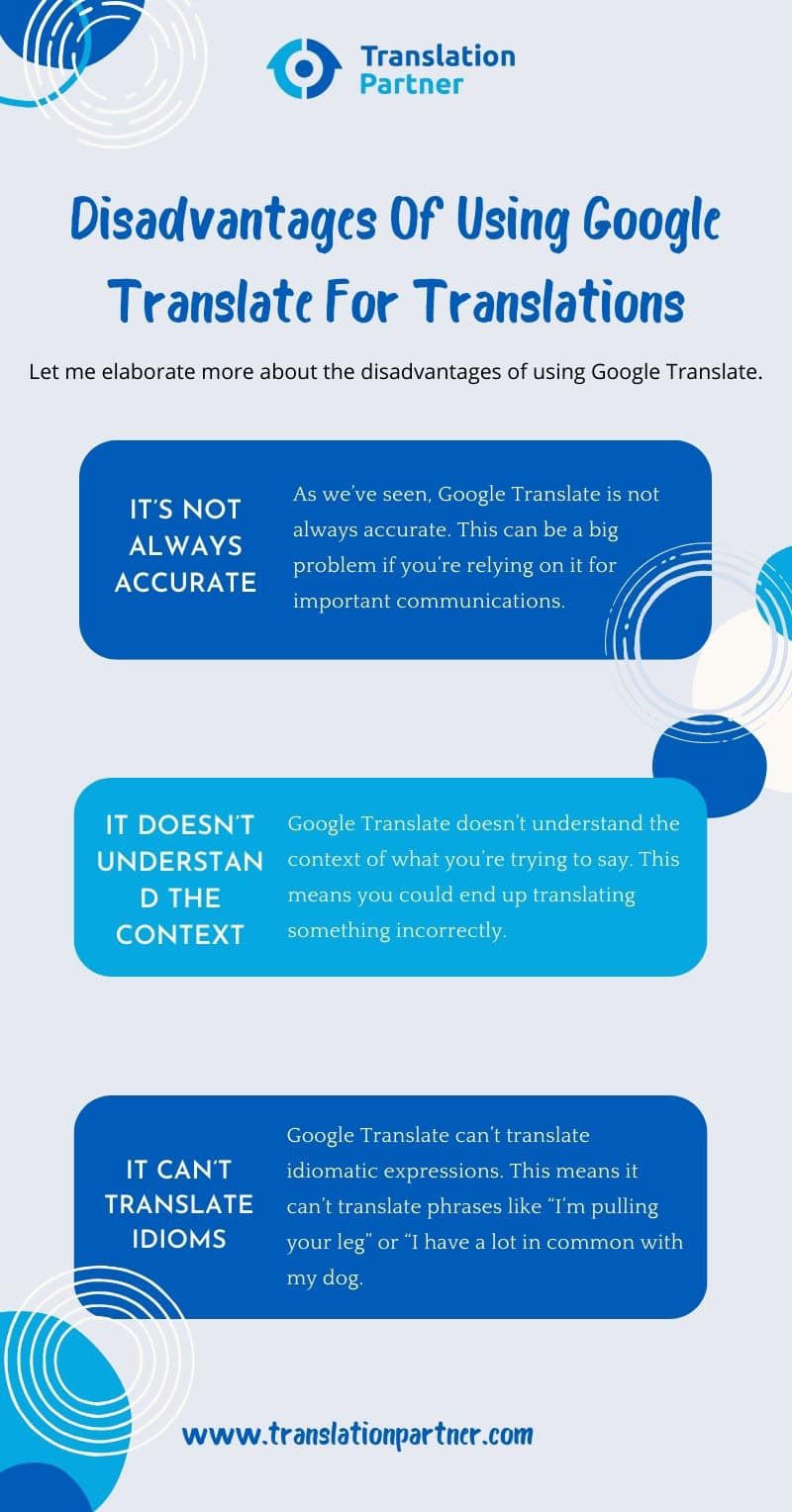How Accurate is Google Translate?

As someone who frequently uses translation services, whether for work or for travel, you may be wondering about the accuracy of Google Translate. After all, Google is one of the most popular translation tools available. But how accurate is it, really?
How Does Google Translate Work In 2024?
To get an idea of how accurate Google Translate actually is, let’s take a look at the base of Google Translate’s algorithm: Google Neural Machine Translation (GNMT).
GNMT is an end-to-end learning approach for automated translation, designed to learn over time by using feedback to improve the quality of its predictions. This allows it to mimic the way humans learn a language.
So, how does GNMT work?
First, it looks at a large number of documents that have already been translated by humans. From this database, it creates a “neural network” which is essentially a mathematical model of the language.
Then, when you input text into Google Translate, it uses this neural network to try and generate a translation that is close to what a human would produce.
Of course, no translation tool is perfect, and there will always be some errors. However, Google Translate has come a long way in recent years and is continuously improving.
According to Google, GNMT “reduces translation errors by 55-85% compared to the previous statistical approach.”
Does This Mean You Can Use Google Translate to Replace Human Translation?
As Google has invested billions in building and developing Google Translate, it would be insane to say you can’t use it at all.
Human and automated translation tools, like Google Translate, can work in different scenarios.
You can use Google translate in certain situations like:
- Sending a quick message in another language
- Translating a document where accuracy is not crucial
- Looking up the meaning of a word or phrase
- while traveling and you need a quick sentence translated
However, there are also many situations where you should NOT use Google Translate and instead rely on human translation. These include:
- Translating sensitive information, such as medical instructions.
- Critical business situations where money is at stake.
- Communicating a marketing message, in ads for example.
- Any time when the quality of the translation is crucial.
Is ChatGPT better than Google Translate?
When it comes to machine translation tools, Google Translate is usually compared to OpenAI’s ChatGPT. Both help with translation, but each has its pros and cons.
So, let’s compare Google Translate and ChatGPT side by side. Here are some key factors to consider when comparing them:
1. Language Support
Google Translate supports 133 languages, which makes it a great choice for everyday translation tasks.
On the other hand, ChatGPT doesn’t support as many languages, limiting its usage.
2. Accuracy
Although it has improved over the years, Google Translate isn’t perfect. Tricky terms and nuanced language may lead to inaccurate translation.
That’s why ChatGPT usually outperforms Google Translate when dealing with complex languages and texts.
It’s important to note that Google Translate may struggle with translating idioms, slang, and specific jargon. It mostly delivers literal translation and fails to capture the correct meaning and context of a text.
For example, when translating the idiom “it costs an arm and leg” into Arabic using Google Translate, the delivered meaning is literal and inaccurate.
On the other hand, ChatGPT could be a preferred option for delivering human-like and contextually appropriate translation.
So, when translating the same idiom by ChatGPT, the translation is more accurate.
As an AI-powered language model, ChatGPT takes its time to process new words, slang, and cultural nuances. These updates are incorporated into its translation algorithm, setting it apart from traditional machine translation tools.
Yet, ChatGPT’s translation could be inaccurate if the original text is too complex, vague, or has highly technical language. This is because it generates responses based on a training dataset during its continuous learning process.
3. Speed
Google Translation is a better option for fast translation as it supports many languages. It’s handy for translating simple sentences and phrases.
However, it may not always provide you with the most up-to-date and accurate translation. This could be even harder to process with constantly evolving languages.
On the other hand, ChatGPT may take more time for more complex translations.
4. Cost
Google Translate is free and readily available to anyone with an internet connection. It also has a mobile app for translation on the go.
Despite having free versions, using ChatGPT for more advanced tasks may require you to pay money.
Top Languages People Use Google Translate for
Google Translate supports more than 100 languages. However, there are some popular languages people use Google Translate for over others.
Among these, English is the most commonly translated language. Being widely spoken, non-English speakers frequently use Google Translate to understand or communicate in English.
Spanish is another popular language people use Google Translate for. With over 486 million people speaking Spanish as a native language across continents, it’s no surprise many rely on Google Translate to bridge language barriers.
Moreover, Chinese, particularly Mandarin, is highly translated using Google Translate, which can handle basic translations from Chinese, in both its simplified and traditional forms, adequately. Due to the complexity of the language and its characters, translation accuracy may vary.
Despite posing challenges for machine translation because of its complex grammar and morphology, Arabic is among the top languages people use Google Translate for. Google Translate aids in translating standard Arabic, but it struggles with dialects and slang.
European Languages like German, French, Italian, and Portuguese have a spot on the list of languages people to Google Translate for.
One of the languages gaining traction over the past years and which more people use Google Translate for is Korean. The rise of K-pop and South Korean dramas has influenced many to seek Google Translate’s assistance in translating Korean content. Yet, it can be challenging because of having different grammar, syntax, and writing syntax.
Do Professional Translators Use Google Translate?
One of the common misconceptions about translation service providers is they use Google Translate to do their work.
But do they really do that? The answer is NO.
They may use it as a research tool to check for words or phrases that they are unsure about. But when it comes to the actual translation work, they will not use Google Translate or any other automated translation tool.
This is because human translators are trained professionals who understand not only the grammar of languages but also how this language works within human communication and interactions.
For example, when translating a tagline for a company, Google Translate can never understand the message behind this tagline. A human translator can understand the message behind the words of the tagline and translate its sense into the target language.
This really answers the question “How accurate is Google Translate?”
What Are the Benefits of Using Google Translate for Translation?
With all of that in mind, there are certain benefits of using Google Translate.

Some of them are:
- It’s free: You don’t have to spend any money to use Google Translate. This can be a big advantage if you need to translate a large amount of text and you don’t have the budget for professional translation services.
- It’s fast: Google Translate is very fast. You can input text and get a translation in seconds. You can use it for situations where you need a quick translation, such as when you’re traveling.
- It’s available anywhere: As long as you have an internet connection, you can access Google Translate. This means you can use it even when you’re in a country where you don’t speak the language and need to translate something quickly.
- It’s constantly improving: Google is constantly working to improve the quality of its translations. As it continues to learn from more data, the translations will only get better.
Are there any disadvantages to using Google Translate?
Like any software, there are limitations and disadvantages. Google Translate has its fair share of limitations.

- It’s not always accurate: As we’ve seen, Google Translate is not always accurate. This can be a big problem if you’re relying on it for important communications.
- It doesn’t understand the context: Google Translate doesn’t understand the context of what you’re trying to say. This means you could end up translating something incorrectly.
- It can’t translate idioms: Google Translate can’t translate idiomatic expressions. This means it can’t translate phrases like “I’m pulling your leg” or “I have a lot in common with my dog.”
Conclusion
Overall, there are both advantages and disadvantages to using Google Translate for translations. It is important to weigh these factors carefully before relying on Google Translate for any critical communications.
You still can use it for quick and easy translations, but be aware that it is not always accurate. If you need a precise translation, it is best to use a professional translator.
